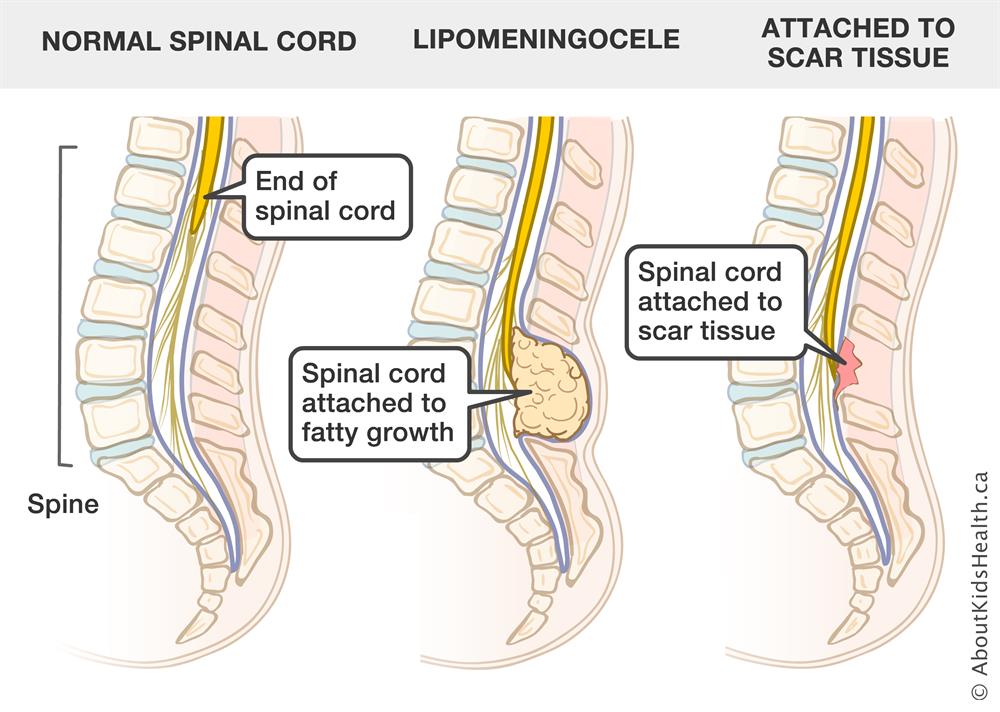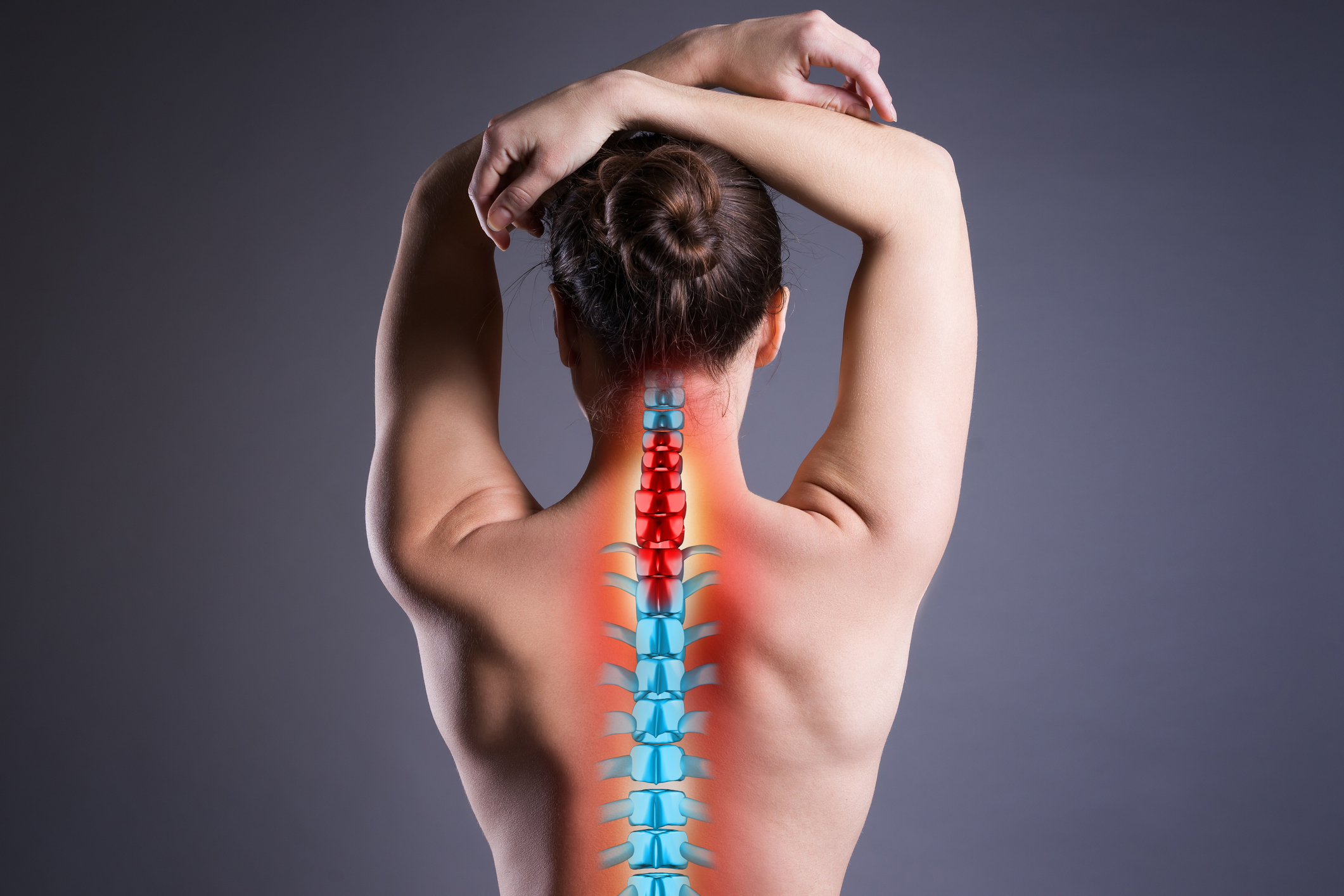Now live! RTHM Direct – simplified medication access for Long COVID, ME/CFS and related conditions. Check it out
To tether something means to restrict its range of movement, either with a rope, a chain, or some other connective point. When you think of something being tethered in the body, what do you think that may mean? Tethered cord syndrome is a neurological and structural condition in which the spinal cord becomes abnormally attached or “tethered” to the surrounding tissues, limiting its movement within the spinal canal and contributing to many often-debilitating symptoms.
Here we dive into tethered cord syndrome, what can cause this condition, common symptoms that patients experience, how clinicians come to a diagnosis, and what treatment options are currently available.
What is Tethered Cord Syndrome?
To understand tethered cord, you must first understand the spinal cord. The spinal cord is a thick column of tissue that runs from the center of your back up to the base of your skull. It is responsible for nerve signals that contribute to movement and sensation. In normal conditions, the spinal cord floats freely within the spinal canal.
As the name suggests, tethered cord syndrome occurs when tissue develops and attaches to the spinal cord, limiting its normal movement or causing it to stretch abnormally from the base. Tethered cord syndrome is a neurological and structural disorder that can be present at birth and is often seen in connection with spina bifida, lipomeningocele, and scoliosis. Tethered cord can also develop in adulthood as the result of a spinal cord injury or trauma, such as surgery. This is a progressive condition that can cause progressive neurological deterioration.

-Diagram of Tethered Cord from AboutKidsHealth.ca
Common Symptoms
Common symptoms experienced with tethered cord syndrome include:
- Lower back pain
- Numbness in the legs and feet
- Weakness in the legs
- Scoliosis
- Sensory and motor dysfunction
- Foot and spinal deformities
- Loss of bowel and bladder control
- Increased heart rate
- Increased blood pressure
- Tremors or spasms in the leg muscles
Causes of Tethered Cord Syndrome
Tethered cord syndrome can be divided into two categories: congenital (primary) or acquired (secondary). Congenital tethered cord syndrome can be caused by an abnormally thick filum terminale. This is the tissue found between the end of the spinal cord and the sacrum. Congenital tethered cord is also common in infants born with spina bifida. Oftentimes symptoms do not occur until the child begins to grow and the tether causes stretching of the spinal cord.
An acquired tethered cord occurs after another complication affects the spine. This can include infections, severe spinal trauma, tumors, the development of cysts (syrinx) in the spine (a condition known as syringomyelia), and scar tissue that can develop after spinal surgery.
Diagnosing Tethered Cord
In cases where patients experience symptoms and a tethered cord is suspected, your clinician and/or a neurologist and neurosurgeon will order one or more specialized tests to examine the spinal cord. These tests can include:
- Magnetic Resonance Imaging (MRI)
- Myelogram
- CT or CAT Scans
- Ultrasound
In addition to these tests, your clinician will conduct a physical examination and discuss symptoms you may be experiencing.
Treatment for Tethered Cord
The main treatment for tethered cord syndrome is surgical intervention, however, not everyone requires surgery. When tethering does not contribute to symptoms or the symptoms are minimal, a neurosurgeon may recommend regular observation until symptoms develop or worsen.
For surgical intervention, a neurosurgeon will perform a lumbar laminectomy in order to release the spinal cord, allowing it to move freely. In most cases, patients experience symptom relief after surgery and the progression of the condition stops. However, there is the possibility of re-tethering, so regular monitoring is required.
Tethered Cord Syndrome, ME/CFS, and Long COVID
RTHM’s Co-Founder and Chief Medical Officer, Dr. Jennifer Curtin sat down with Gez Medinger to discuss Tethered Cord Syndrome and other common structural disorders and how these conditions appear often in those with ME/CFS and now in those with Long COVID. Listen to Dr. Curtin explain these conditions and how they relate to each other in the links below.
The Role of CCI, Chiari, and Tethered Cord in Long COVID
Do You Have CCI, Chiari, or Tethered Cord? The Symptoms to Look Out for with Long COVID or ME/CFS
Diagnosis and Treatment of CCI, Chiari & Tethered Cord in Long COVID and ME/CFS

Get updates
Join our mailing list



